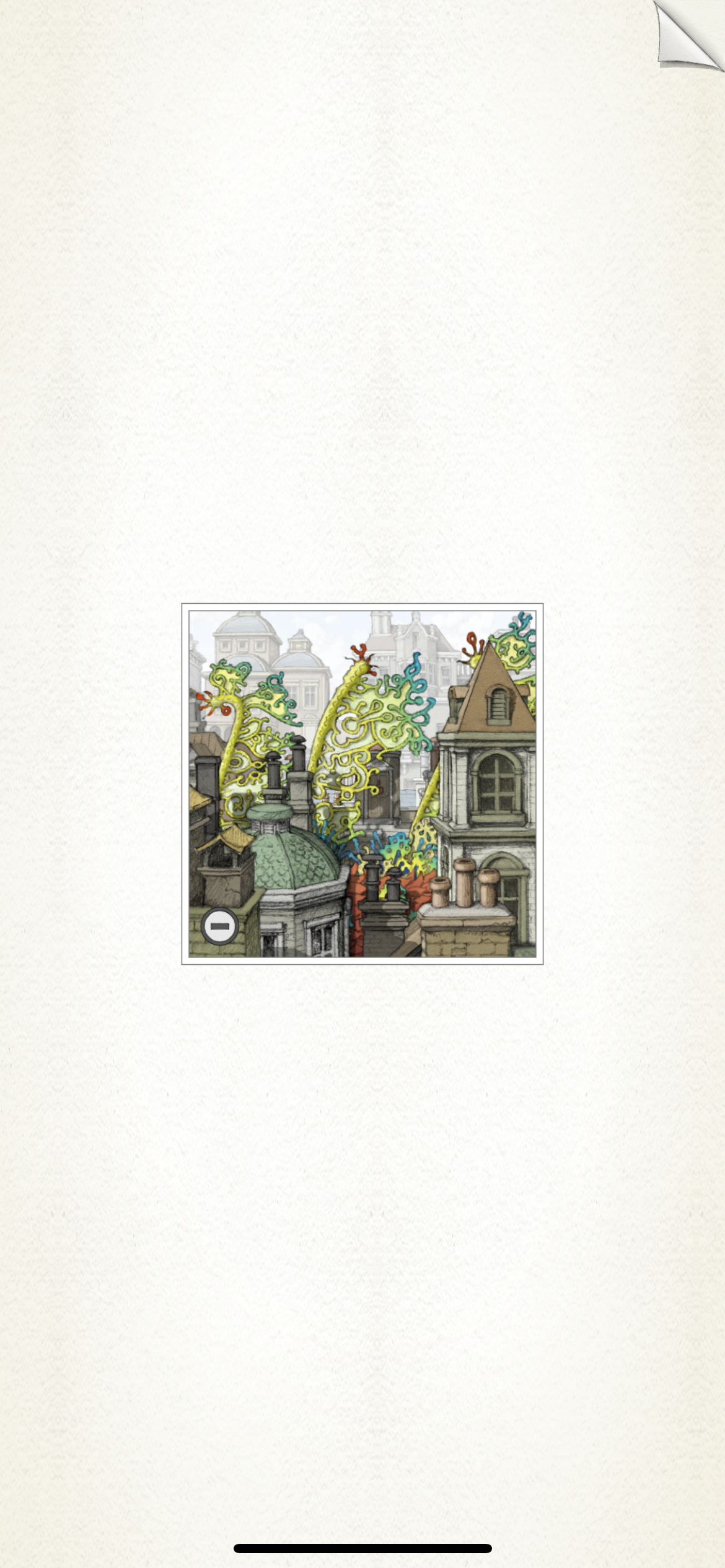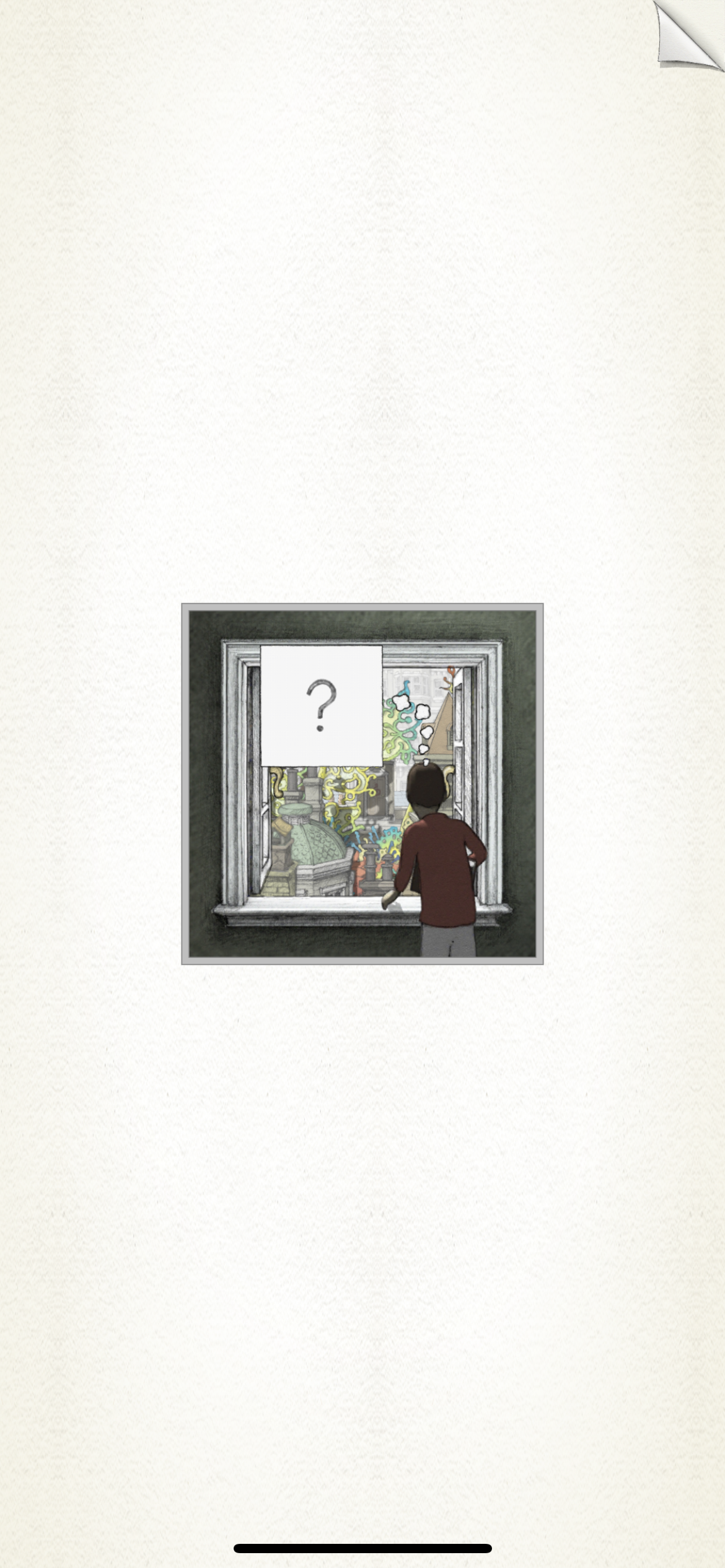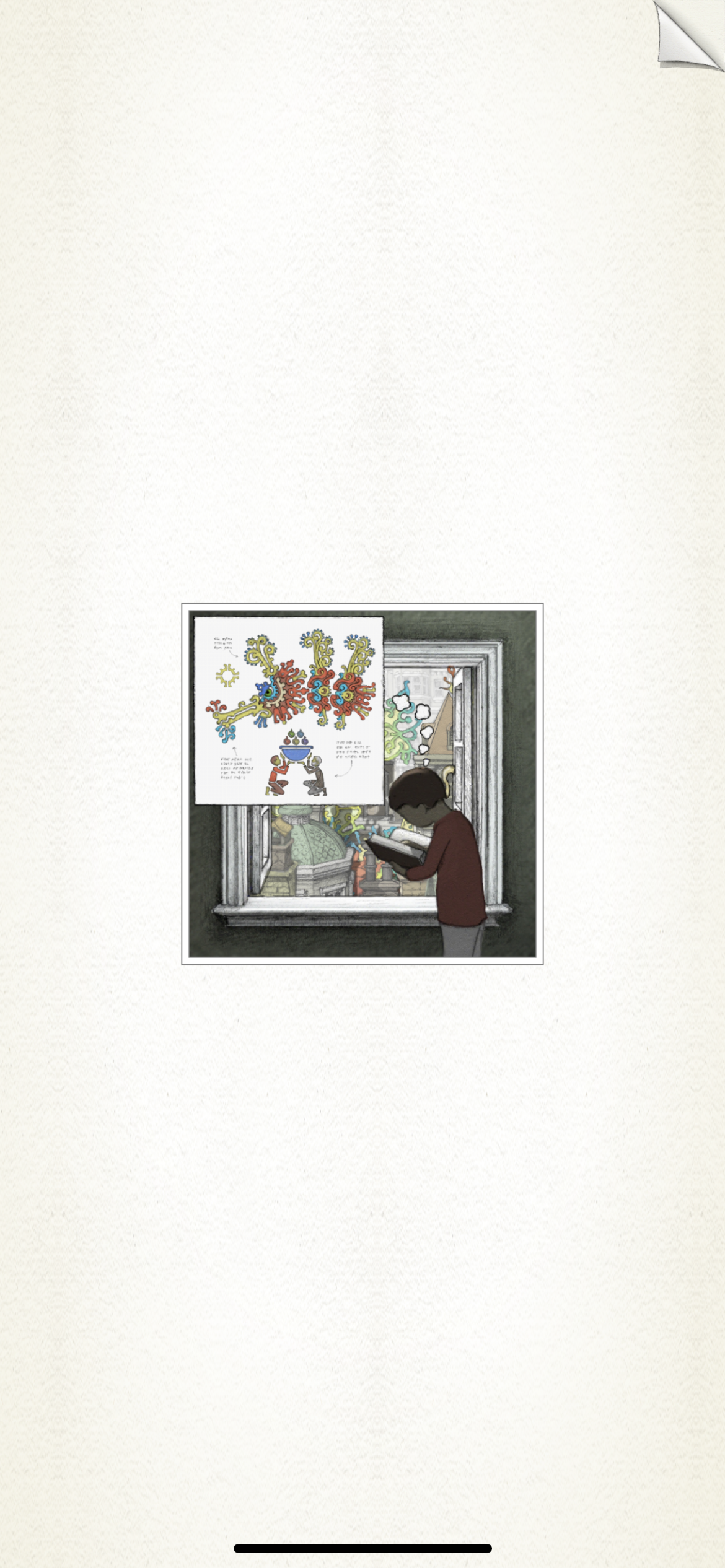I felt like I was in a puzzle from the first screen, looking for cues for how to get the game started, wondering if every image in the book might be important. Unlike other mystery-style and walking sim games I have critically played, there were no immediate English instructions displayed on the screen telling me what to do next, like “Swipe Here”. The design choice not to include immediate instruction puts the player in a problem solving mindset from the beginning of game play. At first this had me consider Rule 8 from our “13 Rules for Puzzles” from Lecture 6B– Rule 8: Tedious work should not be Ambigious on Instruction”, but because exploring this first scene was relatively intuitive, for example items getting larger when clicked, the starting scene does not violate this rule excessively, rather it walks the border of just enough instruction and intuition to create a sense of puzzle and mystery without leaving the player frustrated and ambiguous.
From the first exploration, Rule 2 was also immediately recognizable– Clue Everything and Remove Ambiguities, Don’t Make Players Guess. In response to the lack of instruction, as mentioned above, I quickly realized that if I was clicking in the ‘wrong’ part of the screen, or a part of the screen not essential to the puzzle, hints in the form of haptic circles would appear, encouraging me to redirect my attention. The game designers have created the dynamic of forcing players to make their best guess to start figuring out the puzzle and then quickly following up to make them feel supported with hints.
The hint mechanic was reassuring to me as a novice puzzler, as I was nervous going into the game that I might not be “clever” enough to figure out the puzzles. Although I was nervous to begin playing, I felt safe that Gorogoa was following Rule 1 — “You are on the Player’s Side”. I wonder, critically, if Gorogoa’s puzzle-centric mechanics encourage or discourage gamers of a particular type; for example, computer science or math oriented puzzlers, and how this may contribute to, or defy, stereotypes. It inspires me to wonder how we might use puzzle mechanics in games to uplift, encourage, and inspire engineering thinking for those who may not think of themselves as “engineers” but might be inclined to play a puzzle game “for fun”, particularly women and other under represented groups in the field.

Opening scene with no instruction

Hint example, subtle player support

No English indication, sketch-like illustrations inspire puzzle mindset



